Amazing ! I'm at wraeniem – “RESPEKT”, Ms. Anno !
It's a great job 🙂
And for readers, I want to zwrucić attention, that is the only “THE FIRST”, part of this artukułu, the total is “FOUR” – Please press the button “THE NEXT PART OF THE” and read on 🙂
I greet all cordially !
MAIDAN : THE LAND OF ANCESTORS
- 19 Comments
- Read: 12,468
NieznanaUkraina.pl / Articles, History , Municipalities / MAIDAN : THE LAND OF ANCESTORS

SUMMARY
We present to you article by Anna Krzosek about Maidan. Mrs. Anna belongs to the post-war generation "maidanniks", That's why she had done a thorough examination on a beautiful mountain village of Maidan. We encourage you to read, and you will learn about what was the Maidan on the basis of the most reliable sources of information. We thank Mrs. Anna Krzosek for sharing this article with all of us. Thus, it is the first article of our readers, So we recommend to the active participation of all creative people! 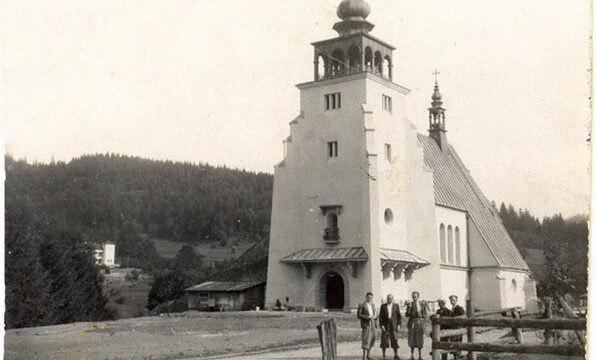
If you are looking for something similar, check RELATED ENTRIES at the end of this article.
CATEGORY OF ARTICLE: Articles, History , Municipalities June 23, 2011, 08:00
Author : Anna Krzosek
Maidan and its close surroundings
Maidan is a beautifully located mountain village in Bieszczady. It lies in the former county. Drohobych, region. Lviv, 32 km south-west. from Drohobych, 26 km from Boryslav, pushing a wedge between the counties Turchansky and Stryisky.
I am part of the post-war generation "maidanniks", that from an early age was brought up in the great love and respect to the place, that parents and grandparents were forced to leave more than 60 years ago, and which image till the rest of their life wore in their hearts. This led to, that "Maidan" has accompanied me "from always", was integral particle of my life, Although I knew, that place called with that word is paradise lost lying somewhere "far in the mountains, in the forests ".
As a child instead of a fairies i was listening to stories about meetings with bears, wolves howling at the moon, fish "babkach" caught in the river with a fork, jelonku Kubusiu wykarmionym bottle. I always went out "on field", and not "on outside", I knew, What is "meshty" or "prylipka" or "kalatushka". No wonder, I did everything, to see this extraordinary place, where everything was better, greater, more beautiful. I went there for the first time on very briefly 1989 year. Since that time I was there several times and it is there for a moment I feel at home, i do a journey in time. It turns out, that such people like me, such "post-war" maidanniks charmed with the birthplace of their loved ones, there are very many. Only now, among others. thanks to Internet we get to know, We often discover connecting closer or further relationship. We have been already for three times in Maidan with such a group, first in October 2007, and then in the summer 2008 y. and 2010 y., discovering it anew.
This, what I write below about the Maidan, I created from scraps of information found in various books and online, as well as fragments of memories of still living maidanniks, including my today 82-year-old Mom, although memory often plays tricks on them and the same event has so many versions, how many storytellers.
Photo from November 1938 y, on which there are my grandparents
How to get to Maidan?
To our Maidan the best way to get there is from Boryslav and Skhodnica, going by a beautiful scenic driving route (unfortunately, positive feelings do not apply to road surface) and going higher and in wilder mountains, it is worth to realize to yourself, that this distance, our ancestors often walked-, going to Boryslav to work or shopping, and even on the market to a distant Drohobych. Their journey did not take place, however, by this route, which is we going, but the so-called. „shortcuts”. You should also bear in mind, that this way famous the "white couriers" rode through , described by Tadeusz Chciuk in his book[1]. From Borysławia road leads through departments, on the left side we path Skhidnycia, then run through Novy Kropivnyk, the bridge on the river Stryj (new, after an old wooden there no sign after the last flood), Rybnik village and enters to the valley of Rybnik Maidansky.
Name Maidan
There were a lot of villages called Maidan was a lot in old Poland, had in its name its additional descriptions, eq. Majdan Zbydniowski or Sieniawski. Our Maidan was called to distinguish Maidan Iron, and thats why, about this further. Majdan is the name of a Turkish origin used for the determination of the square of the village, in the military camp, in the fortress, on yard. The square had economic importance as a place to trade or storage of different goods, packages. Now, in everyday language, means garden or courtyard. At Borderlands with name maidan called cleared places in the forest, for working with wood or charcoal-burning. Maidan is a settlement of the forestry workers.[2]
Photograph showing the Majdan around 1910 year
Location Of Maidan
MAIDAN extends over approximately 2 km in the Valley of Maidansky Rybnyk. It lies on the h:. 530 m npm. Is closed from the west with slopes of Lipovata, from north-eastern. – Horodok, from east. with Mielnichna pass, and on the south slopes of Holyna. At the foot of the Lipovata the Rybnik Valley divides in two : on the right side opens up a new valley of Rybnik Zubzhycky, on the left valley of Rybnik Maidansky stretches.[3] To the south of the village Rybnik extends settlement Holostych (Vodostych), there is a sigh with the name of the village of Maidan and the first buildings stretching to the fork in the road, over which towered powerful iron viaduct narrow gauge railway. Viaduct is gone, leaving only remnants of the pillars. The road leads us to the center of Maidan, on the right side, on a slight uphill ("on a hill near the chapel"), was the oldest (burials possibly discontinued in the 20s of the twentieth century) maidansky cemetery, on which has been preserved tombstone with the figure of Our Lady of Lourdes and the inscription: "Józef i Petrunela Ważni". In the center of the village, in not big distance from each other, the most important buildings were concentrated: 2 the churches, Greek Catholic church, narrow-gauge railway station, which also housed the offices of the company "Godulla", Chateau, school, Rifle Association headquarters, Sickness Fund. Today these buildings do not exist or either changed their destiny. Attracts attention brick church converted into a hotel. This is a sign of the time. There is no one to serve, because there are no Poles in Maidan. The Last, Stanisław Lachowicz, died in 2003 y.
[1] T. Chciuk:White couriers. Munich, Germany 1986.
[2] www.pl.wikipedia.org
[3] H. Gąsiorowski:Bieszczady, Kielce 2000, s. 104 (reprint "Przewodnika po Beskidach Wschodnich"from 1935 y.)
Maidan History
Maidan Iron
Maidan called the Iron[4] because of the local ore. The village belonged in times of przedrozbiorowych to the Crown, for lease Dolhe in przemyska land. About 1820 year smiths were build (still preserved in the village stove - called "monk" for smelting ore from the beginning probably. Nineteenth century). To work in them were brought workers, who settled in the Maidan, in the vicinity of the settlement was a carpenter Malmanstal.[5] Forests belonged at the turn of the XIX and XX century to Baron Johann Liebig (son), and by an index of cities 1918 year [6] He also owned a houses in Maidan. His father (also Johann Liebig, d.. in 1870 y.), German textile Tycoon and entrepreneur, founder of the company, "John Liebig and Co.", in the mid-nineteenth century was the owner of many villages in the area Podbuzh, and also had large tracts of woodland in this area. The company also dealt with the processing of timber in sawmills in Podbuzh and Opaka.
Company “Godulla” and assets of Liebig
At the turn of 1929-1930 company "Godulla" from Górny Śląsk has acquired certain assets of Baron John Liebig. It was goods: (forests with infrastructure): Podbuzh, Maidan and Borynya, which managed, together with Górnośląskie Towarzystwo Akcyjne for Wood Industry. Headquarters was Sambor. The area covered about 35000 ha. "Godulla" S.A. also had their own sawmills in villages: Vyzhne Syniovydne, Turka, Rybnik and Podbuzh. Annual timber exploitation was about 100000 m³.[7] In order to improve its transportation it was built numbering 33 km[8] forest railway Vyzhne Synovydne – Maidan coming out of a sawmill in Synovydne, which with their branches entered into the valley of Rybnik Maidanski to Malmanstalu and Rybnik Zubzhycky valley until Zubrhyca. In Maidan there were three station buildings, which housed the offices of the company "Godulla", warehouses and residences of staff. To this day, was preserved part of the station buildings, although after the tracks there is no trace, and only remnants of embankments show, which way they were going. With other buildings "Godulli" remained close to the station, and built before World War II, palace for the company director (where lived during the war director von Ronnie) and the beautiful villa for executives, in which lived, Eng. Kazimierz Wilimowski (Maidan Forest District headquarters now). There is no magnificent 5-elevation building built for employees near the new church.
Photo from 1939 showing the church
Municipality of Novy Kropivnik
In the 30s of the twentieth century Maidan belonged to the municipality Novy Kropivnik, which was created 1 August 1934 year as part of reforms under the Merging Act of existing rural, such as: Dolhe Podbuske, Kropivnik Novy, Kropivnik Stary, Lastivky, Maidan and Rybnik.[9] Between wars Maidan was one of the few villages in the area. Drohobych with the vast superiority of the Polish population. About 1880 year it numbered 400 residents[10], and by and census 1921 year in the village were 120 residential buildings, lived 710 residents (315 men and 395 women), of which 365 Roman Catholic, 258 – Greek Catholic, 3 - Evangelical, 84 – Moses. 364 persons of Polish nationality were, 245 – Russ, 7 - German, 84 - Jewish, 10 - Other[11]. This "Polish-ness" can be clearly seen Maidan, when we look at the neighboring towns. And so in Rybnik bordering on Majdan (by the above-mentioned census) at 855 population declared Polish nationality only 53, and 708 – Russ (91 - Jewish, 3 - Other), and in Dołhem on 2097 residents admitted to the Polish nationality only 23 people, but for Russ - 1965, and the Jewish - 109[12]. Residents formed a family of many generations very Maidan Nezalejnosti most affinity with each other through marriage, and that some names were particularly popular, today it's sometimes difficult to figure out, about who was going. So dealt with it in variety of ways. My grandfather Jan Ważny was called Jańciem, and his cousin (also Jan) was known as Johann.
Families living in Maidan before World War II
In Maidan before World War II lived (in alphabetical order): Beneszowie, Bilińscy, Błoniarzowie, Bulukowie, Dutkowie, Eislerowie, Hanebachowie, Ilniccy, Izdebscy, Jaworscy, Kamińscy, Kozłowie, Kwasinkiewiczowie, Millerowie, Pasiniewiczowie, Piziakowie, Smolakowie, Smolniccy, Sobolowie, Szewczykowie, Szkitowie, Sztekielowie, Ważni, Woźni(Ważni), Wilińscy, Witaliszowie, Wittmanowie, Wójtowiczowie, Zajączkowscy, Załaszczukowie, and in nearby Malmanstal lived the familes Klobuczarów, Pachlów, Rybotyckich, Sztogrynów, Szwabów, Thielów, Walterów, Vonczinów. The Maidan forest district staff, who usually after several years of residence with their families were moved to another location for business, remained in the memory of family names Jossów, Slamów, Pisarskich, Wilimowskich.
[5] There as before.
[6] „Najnowszy skorowidz wszystkich miejscowości z przysiółkami w Królestwie Galicyi, Wielkiem Księstwie Krakowskiem i Księstwie Bukowińskiem”, Lviv 1918, s. 98.
[7] www.podbuz.pl (Mr. Thomas Lechki page).
[8] H. Gąsiorowski, op.cit., s.146.
[9] www.pl.wikipedia.org
[10] Słownik geograficzny…, Warsaw 1886, s. 912, t.V.
[11] Skorowidz miejscowości Rzeczypospolitej Polskiej. Warsaw 1924, Tom XIII, s.10.
[12] There as before.
Multiculturalism Majdan
and the lives of the residents
So apart from the Poles in the Maidan and Ukrainians lived Malmanstalu, Jews and Germans, and relations międzysąsiedzkie arranged very well and nothing foreshadowed the tragic events, the witnesses and participants have become residents of Maydan in World War II.
The oldest majdaniacy remember with great fondness their childhood years attributable to the period before World War II. The village is situated between picturesque mountains and the clear mountain river teeming with life. Work on the acquisition and processing of wood from nearby forests provided the company "Godulla", many residents have a greater or smaller farms, and although management of the mountainous terrain was not an easy, provided a decent life. A few went to work for Borysław.
Until I saw with my own eyes Majdan, I could not imagine the hay zwożonego of high altitude mountain meadows in winter only, sleigh, because in the summer it was impossible. And these tales of "hummingbirds", where he lived during the haymaking! Houses were surrounded by orchards, with many permanent apiary, and when there was no work in the field, could earn some extra money when skidding wood in the forest. To the village very eager to come holidaymakers, Majdan and values as a summer resort village has praised H. Gasiorowski in your guide with 1935 y.[13], at the same time informing, Malmanstalu that in a nearby shelter operates year-round branch PTTK Drohobycz[14], Acting in a convenient starting point for Parashka, Black Mountain or Szebelę.[15] Every summer on the southern edge of the village of his breaking camp with the scouts Borysław, Drohobych, and even Lviv.
The surrounding forests were full of mushrooms. For berries marched on Seredne or Widnohę, everywhere was full of raspberries and strawberries, although sometimes defended access to them basking in the sun, snakes. And the hazelnuts must be sometimes "popular sentiment" with a bear and to this day I remember these full drama story about such meetings. Not only is no shortage of bears in the woods, there lived a wolf, lynx, deer, wild, not to mention the finer zwierzyn. Apparently, before the war, Marshal of the Third Reich itself Goering came here to hunt. Or maybe it's just one of many legends majdańskich?
In the village there were a few shops, sawmill, mill, school work. The existence in the village school one-class schematyzmy already confirmed in the years 1911, 1912, 1913, listing the names of teachers (1911 - Joseph Schikula, 1912 - Friedrich Zielinski, 1913 - Witold Bazali)[16]. From 1924 taught in the school year Krystyna Rogoszewska, and the school has its own wooden building (survived to this day) with one classroom and housing for teachers and school field[17].
In later years there were other teachers (Gutowski, Grabiec, Dolski, Trzaskowska), but the memory remains primarily majdaniaków name you Piziakowej (teacher m.in. my mother), which was also a kind, as we say today, animator of the cultural life of the village. She was the initiator and organizer of most school events, and environmental (such as Christmas nativity play, theater, academies on the occasion of world government), which took place in the spacious hall of the Riflemen's Association, Maidan acting very rapidly. In the hall of the Union is also amused at carnival games. Residents Majdan, Poles and Ukrainians, work together, invite to your feast, keep children for baptism, pray together, because if it was not a priest Dołowego, we celebrate picnic or go to church to pray and not bother anyone.
When someone is ill, medical care gave Dr. Stanislaw Slawek with Schodnicy. And that gave the children to play with colored boxes in medicine, sometimes it was necessary to simulate abdominal pain, just to go to a favorite doctor. For one such history admitted my mother and did not stop her, even this, it just took on water in Stryj, She broke a wooden bridge, a car crossing the river was quite dangerous. The pain has passed, as hand takes away, soon became a longed to have her boxes. The doctor also saved the life of my mom, when aged 4 years fell ill with diphtheria, unfortunately, about her older 2 sister died years Wisia. And before the same war in Sheptytckiy square, in the room of money Ill patients receive Dr. Czarkowski.
Catholic heritage
Because the residents were mostly Majdan Catholics, already 1861 for them was built a wooden chapel dedicated to St.. Michael[18], which was subject to Podbużu ekspozyturze, and from 1924 years in the parish Schodnicy. She had a separate bell tower, which at the time of World War I requisitioned 2 bells, leaving the oldest 1869 y.[19] Residents take care of your wooden church, to which the 1926 year as the third Sunday came the parish priest Fr schodnicki. John Dołowy. Unfortunately, The, today only its foundations, where the local sexton, supporter of the Polish-Ukrainian reconciliation, put a wooden cross. Kościołek (along with the bell tower) was demolished after the war (somewhere in the 60s), and only in the tree's age the same rustle, as then, as the prayer of him en route to our grandparents.
Photo of 1938 year during construction of the Cathedral
As I mentioned earlier, preserved in the Maidan was built before the war brick church, although its shape after reconstruction around 1980 He has changed significantly. At the same time as the new church has "Godulla" built just above the wooden Greek Catholic church for the villagers, as previously prayed in the envelope for this purpose room house belonging to the company.
The initiator of the construction of the church was Eng. Kazimierz Wilimowski, employee "Godulli", which 1938 y. forwarded the plot for construction, and has undertaken to finance the work "without internal finish" for the amount of 114 k. zł. Their start was planned for spring 1938 y., "So that by autumn the church was brought under the roof."[20] Before the war the church tower bells hung (perhaps three), whose beautiful voice could be heard far away in the mountains (the Seredni). These bells unfortunately took Germany (and probably melted). Church during the war stood empty, closed, Masses were held in an old wooden, only used bells (before they were stolen ). The church was not dedicated (not zdążono, war).
[14] There as before, s.10
[15] There as before, s.10.
[16] Kingdom of Galicia and Szematyzm Lodomeria of the Grand Duchy of Cracow, Lviv 1911,1912,1913, and www.mtg-malopolska.org/bibliotekacyfrowa.
[17] List of public elementary school teachers, Lviv 1924, s. 10.
[18] Geographical Dictionary, s.912.
[19] Rafal Quirini-Poplawski: Church in Majdan [in:]Churches and monasteries of the former Roman province. Russian, Classifieds 1998, the 6, S122.
[20] Chirp. for Churches, S122
The fate of Maidan after World War II
World War II destroyed the peaceful rural life so far. September 1939 was warm and sunny. In this lost village in the mountains there was no indication, that soon nothing will be like the past.
After the war Maidan's inhabitants were send in different places in Poland, arrived there, where their transport took them. Those, who left early, spring, settled in Sciniava Nyska, my family 9 August 1945 year, together with the other got out of the transport in Nowa Ruda, and autumn transport arrived over the sea to Lublewa. After years of waiting, of temporality, living on a suitcase, Maidanniks finally understood, that will never go back on their river, to their homes, to their church. So those, who could, then began their pilgrimage to this holy place for them, trying to circumvent the various prohibitions and risk of withdrawal to the border. And when they returned, again spoke, told, told. about, that there no longer many of Polish homes, that the water in the river dried up, the mountains are some kind lower, and fields are overgrown.
But though the elders no longer find their Maidan, they raised the next generation, that beloved ancestral land and now "post-war maidanniks" ride "to explore" Maidan. Two years ago we were able to reach up to Malmanstal, where there didn't preserved any of a Polish houses, and only the old fruit trees are evidence, that there were homes. We saw for colored cleaning in steep mountain slopes between Valley meadows covered with centuries-old forests and crystal-clear water. Now we miss for that place and we, we can't wait, when we go there again.
We wish to thank Mrs. Anna Krzosek again for sharing her article about Unknown Maidan, we hope, that together we helped it to become more known, because it's really beautiful, noteworthy locations.
We also encourage all readers to create their own interesting stories about their native places, about trips or their memoirs about Ukraine. Together we can discover for ourselves a lot of interesting about Ukraine!
ARTICLE TAGS

COMMENTS TO THE ARTICLE
THERE ARE COMMENTS
WE APPRECIATE YOU COMMENTS (SOME TRANSLATED FROM POLISH)
Artur Czernych wrote,
June 25, 2011 , 09:02
Artur Czernych wrote,
June 25, 2011 , 09:09
I Think, that the Council is RURAL, or MAYOR of a village MAJDAN – should Ms Anna, the Medal of honor “for the great contribution to the promotion of, marketing and raising knowledge and history of “Unknown Village Majdan”” !! Or issue a document “Honorary Citizen” ! 🙂
miller wiesław wrote/MiG,
April 8, 2012 , 21:31
Very,very beautiful article. I come from the family Miller,I am the grandson of Vincent and Stefani, those that settled in Lublewie and surrounding areas. I was never in Majdanie physically, Although the heart often there zaglądam. Thank you for the beautiful article, and the beautiful work that You performed.
Yuri wrote,
April 16, 2012 , 10:01
I agree that Ms. Anna wrote a cute article. I recommend visiting Majdanu, really beautiful nature and place of!
Ilse Fitzbauer wrote/MiG,
July 07 8, 2012 , 09:35
My father’s family (both families of my grandparents – Jan Miller & Konstantyna Pasiniewicz)came from Majdan. I never had the chance to see or even ready more about my fahter’s native country. Therefore I’m really glad to read this great postng and of course to see the pictures.
to Ms Anna – Thank you very much!
Adam Piotrowski wrote/bath,
June 2, 2015 , 22:31
I've never been in Sheptytckiy square, but very much heard about it and just this year/between 8 and 18. 07. 2015/I'll be in this charming town, and “Kim”It was Mrs. ANNE młodziży group there when I arrive.,campaign participants”The grave of praděd save from oblivion”.By the way, let's clean forgotten tombs in the old cemetery and we light candles.
Smolnicka wrote/bath,
February 9, 2016 , 20:58
Amazing article! I come from a family of Smolnickich, and exactly I am the granddaughter of Anthony and Catherine (Home Wilińska) Smolnickich, who came from the village of Majdan. After the war, the great-grandfather settled in general aviation Nyskiej. Now I create a geneaologiczne tree. If anyone had any information on Smolnickich or Wilińskich from Maidan Nezalejnosti, please contact.
Best regards!
And once again, Ms. Anno great article! 🙂
tacjanna wrote/MiG,
April 10, 2016 , 19:51
Thank you very much for your kind words. Please contact me. My praprababcia was from the House of Wilińska. In my family tree are also majdańscy Smolniccy, not to mention other families.
I cordially greet.
danuta wrote / Votes,
April 11, 2016 , 18:45
Smolnicki I know because my grandmother was the sister of Anthony What is your name surely you live in Nysa danuta
AGA wrote/bath,
September 16, 2016 , 09:02
great article!I have never been in this place but certainly I am going there because my great-grandfather John Lachowicz and grandfather Joseph Lachowicz from those pages were. If anyone has information about this family please write in advance. Best regards
Victoria Beck wrote / Votes,
August 9, 2018 , 04:14
I am a descendant of two families: the Mueller and Wilinska families. Thank you for the photographs. The Mueller have a family tree online. My great great grandfather was Mueller. I don’t know anything about the Wilinski tree, my great great grandmother’s family.
FREDO wrote / Votes,
August 17, 2018 , 14:57
It may be someone who would say something about the village zalokiec, where my mother was born in 1927 year. bearing about 14 years was witnessed murder the whole family. I do not know how he got to work in Germany in the rucila 1947 I was in urodzlem 1949 r .nosila name kropiewnicka his father did not know how her mother had the name I think she was a Jew drug which its towazyszyl upon arrival is not much I describe my bala.ojciec anything about her he did not know. Mom died in 1958 year. mam70latmoze someone knows something, please contact us
Richard wrote / Votes,
January 29, 2019 , 20:30
My dad was born in 1934 Equal year and his family came from these sites and Janicki name does not appear in the statement as well as Filiczkowski
Joanna wrote / Votes,
April 12, 2019 , 21:24
Mrs. Smolnicki.. Please look at my page on Facebook, There has released pictures of families with pre-war Lviv, probably Smolnicki. My website joanna.bartnicka.18
Tadeusz Smolnicki wrote / wa,
February 10, 2021 , 10:55
A very interesting article. My grandfather, Michał Smolnicki, was born 1881 in Maidan.
Andrzej K wrote / wa,
June 5, 2021 , 21:29
Andrew
To Mrs. Smolnicka. My mother, nee Wilińska, she came from Maidan. Mummy had three sisters and four brothers. I would like to contact you.
I cordially greet.
Thomas B wrote,
December 4, 2022 , 00:49
Hello, my grandmother comes from the village of Majdan ,her name was Stefania
Walter née Wilińska, husband of Julian Walter. Please contact me, maybe we can write a continuation of this wonderful article, greet
Thomas B wrote,
December 5, 2022 , 23:39
Hello my grandmother Stefania Walter wife of Julian Walter née Wilińska lived in the village of Majdan, then in Zielona Góra, later in Szczecin, greetings
Ew wrote,
July 07 7, 2023 , 19:16
Hello, my grandmother's name was Józefa Pasiniewicz (from home important) in Poland, they settled with their grandfather, Stanisław Pasiniewicz, first in Ścinawa Nyska,and then they left for Głuchołazy. If anyone from the Ważny or Pasiniewicz Family is here, please contact me via Facebook – Ewa Mikolajczyk, city of Szczecin, comes from Głuchołazy. Regards 🙂
PLEASE WRITE YOUR COMMENT
SHARING WITH US YOUR THOUGHTS
Post your comment
About Site
NieznanaUkraina.pl
happy reading about Ukraine, We encourage you to actively comment! About page

Comments
- Małgorzata wrote in BALNEOLOGICAL RESORT NEMYRIV :
My great, great, great grandfather was born in Niemirów in... 1865 y. His mother's family ( Lechańska Rozalia) from there… - Valentina wrote in KREMENETS : HOME TOWN OF JULIUSZ SŁOWACKI :
Hi, how can I get information about the towns in Kremenets by 1920th? I want to know about m'y roots.… - Pan Prozak wrote in SAMBOR :
So. It used to be a beautiful city! Well, what did they do to the Falcon's house during the Soviet era?… - Wojciech Zaleszczak wrote in FREDROWSKIE RUDKI AND BEŃKOWA WISZNIA :
My grandfather, Adam Zaleszczak, born in 1919, came from Rudki Fredrowskie. Maybe someone something? - tacjanna wrote in UNKNOWN VILLAGE MAIDAN :
The books are in the Archdiocesan Archives in Przemyśl, but difficult to access. However, there are scans of Greek Catholic records available on the Internet… - Anna B wrote in UNKNOWN VILLAGE MAIDAN :
Hello Marcin, my Grandma Helena née Pachla, had a sister, Karolina, and they lived in the village with my grandfather, Kazimierz Koziol… - Ew wrote in MAIDAN : THE LAND OF ANCESTORS :
Hello, my grandmother's name was Józefa Pasiniewicz (from home important) in Poland they settled with their grandfather Stanisław Pasiniewicz first…
SEARCH
ON WEBSITE
INFORMATIONS
POPULAR
Articles, that read the most timesWHAT CAN BE TRANSPORTED BY ... : 167,524
UKRAINIAN LARD: SAŁO.. : 83,750
UKRAINIAN CIGARETTES AND YOU .... : 80,073
NATIONAL SYMBOLS OF UKRAINE : 63,882
BY TRAIN VIA UKRAINE: ... : 62,685
UKRAINIAN LANGUAGE and ALPHABET : 58,859
POLAND - UKRAINE BORDER : 47,275
THE PURCHASE OF RAILWAY TICKETS ... : 42,136
EXCHANGING CURRENCY IN UKRAINE : 42,083
BEFORE YOU TRAVEL : 34,324
MOBILE IN THE UK.. : 33,591
HOLIDAYS IN UKRAINE : 33,477
A TRIP THROUGH MEDYKA : 1ST... : 32,012
FAMOUS UKRAINIANS : 31,583
CRIMEA : AUTONOMOUS REPUB .... : 30,167
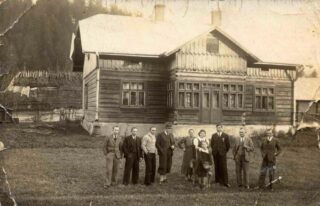
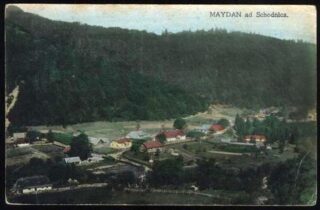
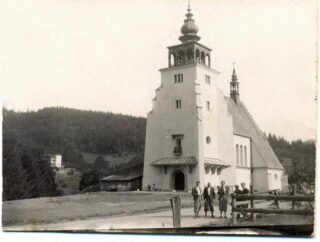
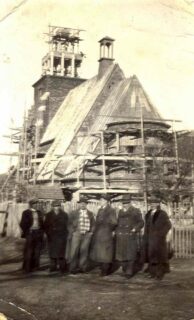
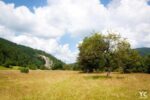 UNKNOWN VILLAGE MAIDAN
UNKNOWN VILLAGE MAIDAN CAMPING FOR 6 DAYS IN AN UNKNOWN VILLAGE MAIDAN
CAMPING FOR 6 DAYS IN AN UNKNOWN VILLAGE MAIDAN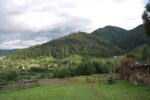 RYBNIK : PLACE, IN WHICH TIME FLOWS SLOWER
RYBNIK : PLACE, IN WHICH TIME FLOWS SLOWER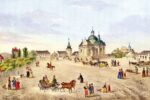 PRIVATE CITY ZHOVKVA
PRIVATE CITY ZHOVKVA